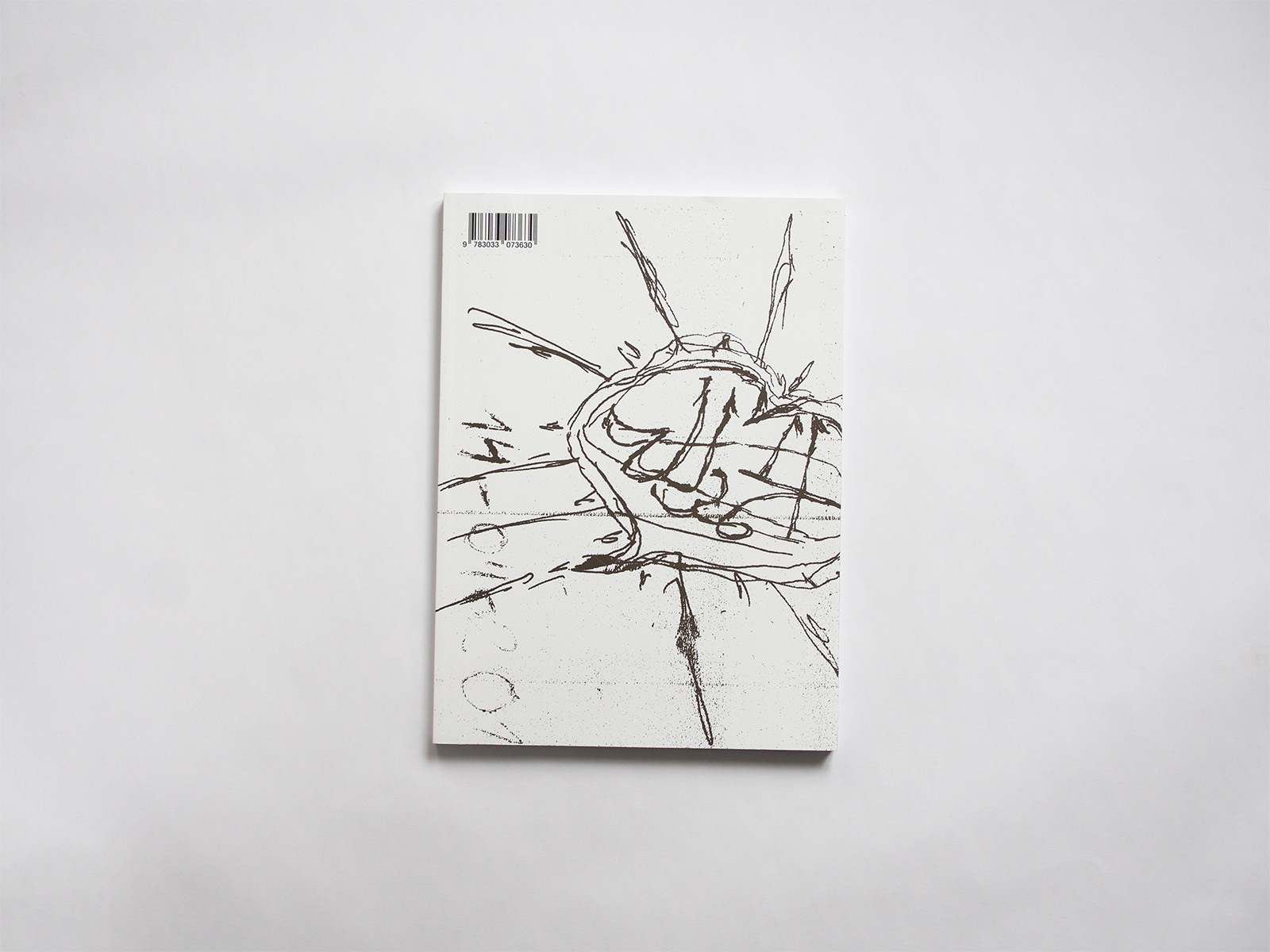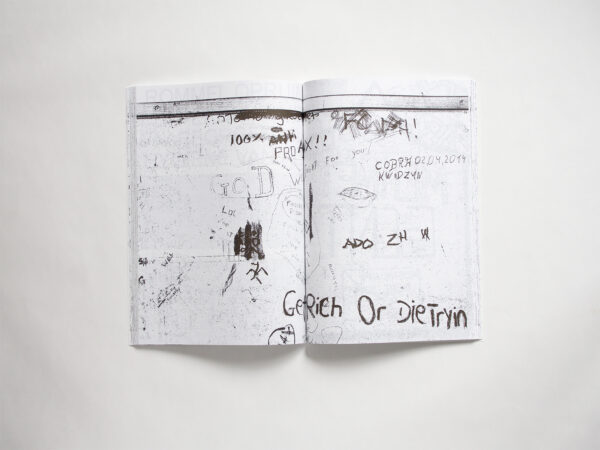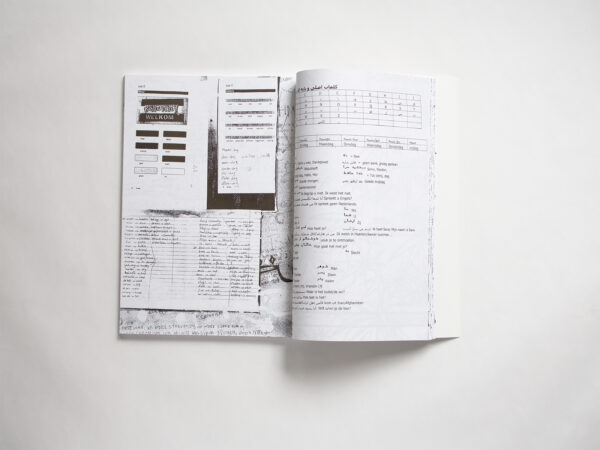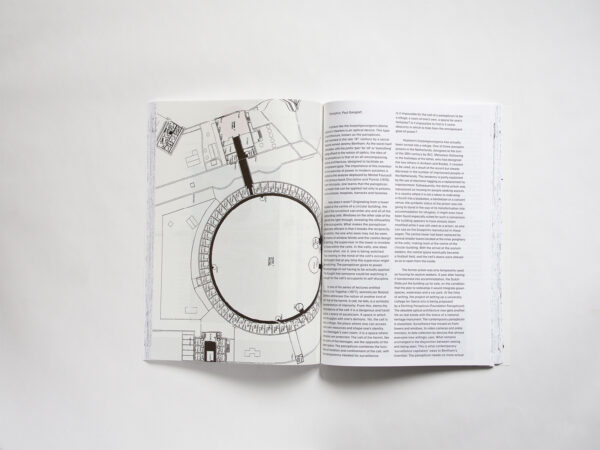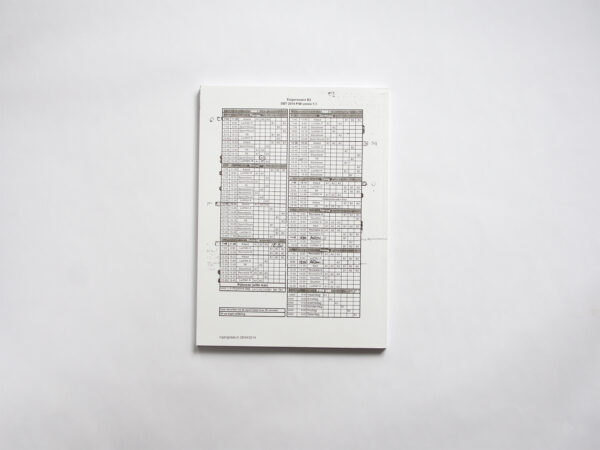L’Europe c’est Deutshland si tu rate laba tu est foutue mon frère, le reste c’est du forma-fouma!
L’Europe c’est Deutshland si tu rate laba tu est foutue mon frère, le reste c’est du forma-fouma!
I never thought being boring could be interesting. L’Europe c’est Deutshland’s premise is not only to provide a spectacular and up-to-date exhibit of the Haarlem Koepelgevangenis’ wall-drawings in this vivid, yet high-resolution book, but also shows that the ominous surveillance of a panopticon will not prevent its inhabitants* to be judicious and creative. Capturing these expressions within a large, black and white, monotonous, vernacular style can be difficult. The irony is that the splice work is not hard to read, as there are just enough floating bits and clicks in the main text for the majority of the reader to feel like they can make out what’s going on. The jury was not sure at first, as we were hoping to encounter a more experimental design, less aligned with conventional design decisions. We did, however, experience what a successful design can accomplish, since all the elements seem to nudge you towards the essence, and humbly tries to have the content remain alive and alluring with crops and elements that keep the reader interested. After a while, this book, and what it represents, started to grow on us.
*The Koepelgevangenis in Haarlem used to house prisoners and asylum seekers.
- Auteur
- Eliott Déchamboux, Marcel Mrejen
- Serie
- No
- Oplage
- 1000
- Omvang
- 234
- Prijs
- € 28
- ISBN
- 978-3-033-07363-0
- Verschijningsdatum
- September 2019
- Uitgever / Opdrachtgever
- Jungle Books (St. Gallen, Switzerland)
- Ontwerper(s)
- Marcel Mrejen (Amsterdam), Eliott Déchamboux (Amsterdam)
- Drukkerij
- KOPA Printing House (Kauno raj., Lithuania)
- Lithograaf
- Eliott Déchamboux (Amsterdam)
- Boekbinderij
- KOPA Printing House (Kauno raj., Lithuania)
- Materiaal
- Paper interior: Munkan Polar 90 grams, Rembrandt R4 Cedro 115 grams
Cover material: Rembrandt R4 Cedro 250 grams - Bindwijze
- Perfect binding
- Lettertype
- Plain, Optimo Type Foundry
- Technische Bijzonderheden
- We used 2 different blacks for the printing (except for 1 image which is in CMYK); a Regular black and a Pantone black.
I never thought being boring could be interesting. L’Europe c’est Deutshland’s premise is not only to provide a spectacular and up-to-date exhibit of the Haarlem Koepelgevangenis’ wall-drawings in this vivid, yet high-resolution book, but also shows that the ominous surveillance of a panopticon will not prevent its inhabitants* to be judicious and creative. Capturing these expressions within a large, black and white, monotonous, vernacular style can be difficult. The irony is that the splice work is not hard to read, as there are just enough floating bits and clicks in the main text for the majority of the reader to feel like they can make out what’s going on. The jury was not sure at first, as we were hoping to encounter a more experimental design, less aligned with conventional design decisions. We did, however, experience what a successful design can accomplish, since all the elements seem to nudge you towards the essence, and humbly tries to have the content remain alive and alluring with crops and elements that keep the reader interested. After a while, this book, and what it represents, started to grow on us.
*The Koepelgevangenis in Haarlem used to house prisoners and asylum seekers.
- Auteur
- Eliott Déchamboux, Marcel Mrejen
- Serie
- No
- Oplage
- 1000
- Omvang
- 234
- Prijs
- € 28
- ISBN
- 978-3-033-07363-0
- Verschijningsdatum
- September 2019
- Uitgever / Opdrachtgever
- Jungle Books (St. Gallen, Switzerland)
- Ontwerper(s)
- Marcel Mrejen (Amsterdam), Eliott Déchamboux (Amsterdam)
- Drukkerij
- KOPA Printing House (Kauno raj., Lithuania)
- Lithograaf
- Eliott Déchamboux (Amsterdam)
- Boekbinderij
- KOPA Printing House (Kauno raj., Lithuania)
- Materiaal
- Paper interior: Munkan Polar 90 grams, Rembrandt R4 Cedro 115 grams
Cover material: Rembrandt R4 Cedro 250 grams - Bindwijze
- Perfect binding
- Lettertype
- Plain, Optimo Type Foundry
- Technische Bijzonderheden
- We used 2 different blacks for the printing (except for 1 image which is in CMYK); a Regular black and a Pantone black.
